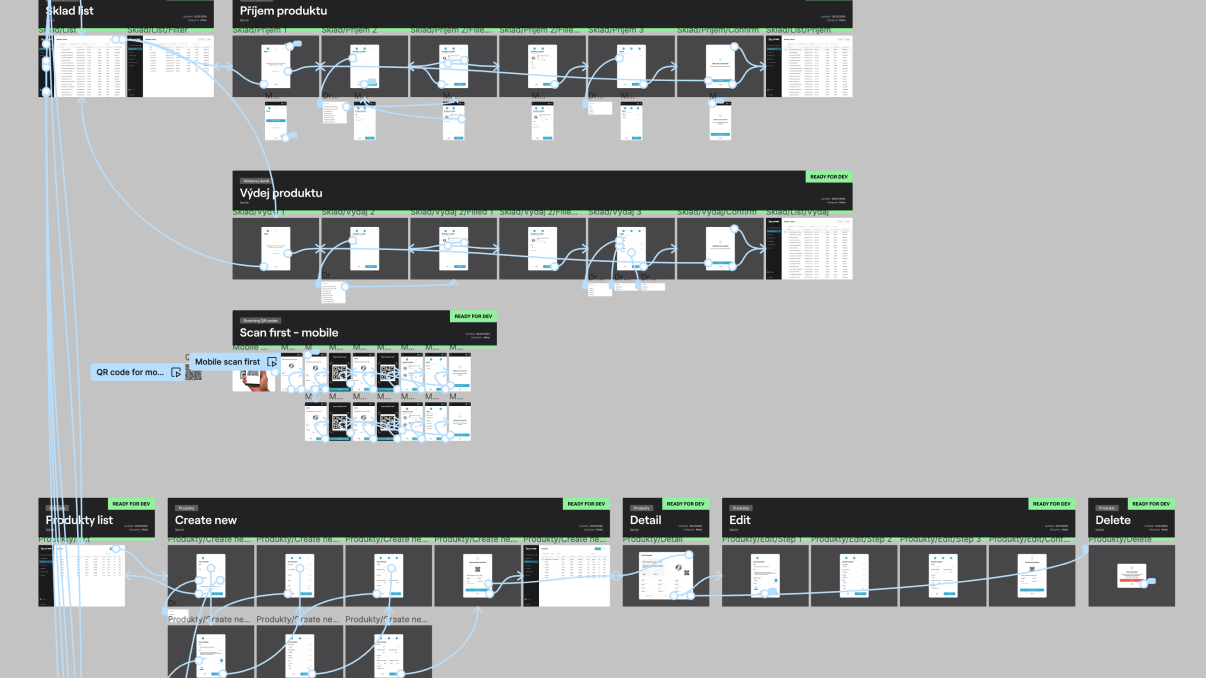👀 Problem
The biggest pain in warehouse management today is the time sink caused by outdated systems. Managers are drowning in paperwork, forcing workers to sit idle while waiting for approvals and updates. This bureaucratic bottleneck not only wastes precious time but also leads to errors, misplaced inventory, and sluggish operations. It's a domino effect that hits efficiency and profits hard.Businesses are crying out for a faster, simpler way to manage inventory that keeps everyone productive and the warehouse running smoothly.
Discovery and research
Based on the client's specification of the product solution, I immersed myself in gathering all relevant information. This phase involved a deep dive into understanding the problem, identifying the target audience, and gaining insights into the industry. The goal was to build a comprehensive foundation for the project.
Information architecture
With the gathered insights, I proceeded to prepare the information architecture structure. This crucial step involved filling in any gaps in the product flow to ensure a logical and seamless user experience. The focus was on creating a coherent structure that would support the app's functionality and user needs.
Hi-fi prototyping
After clarifying the structure, I made the strategic decision to move directly into designing the app. The aim was to create a high-fidelity prototype as quickly as possible. This approach allowed for early user testing to validate both the functionality and usability of the solution, ensuring we were on the right track from the outset.

User testing
The usability testing phase consisted of five remote interviews, carefully selected to represent all user personas. While the primary focus was on evaluating the usability of our solution, I also took this opportunity to gain deeper insights into the users' current pain points. This dual approach allowed for potential refinements and additional problem-solving.

💡 Learnings
The usability testing proved to be highly productive and was well-received by the client. A crucial issue within a key feature flow was uncovered, specifically related to the physical scanning of products in the warehouse. This discovery highlighted the importance of considering real-world usage scenarios and led to necessary refinements in the design.




